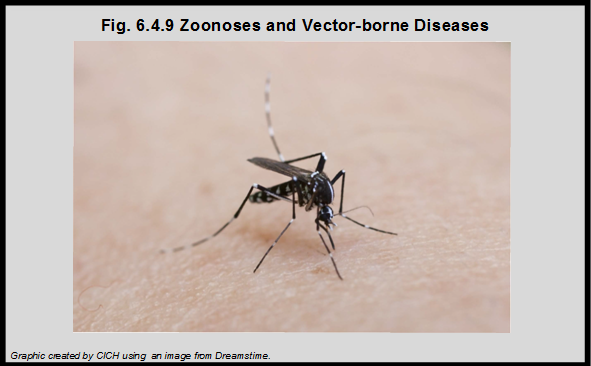Zoonoses and Vector-borne diseases

The threat of contracting disease through zoonoses (disease directly transmitted from animals to humans) and vector-borne disease (those transmitted between humans or from animals to humans by an arthropod such as an insect) may be increased with climate change.
Children are more vulnerable to vector-borne illness because they generally spend more time outside than do adults.1
In Canada, Lyme disease, spread through ticks, is considered an important threat. The annual number of cases of Lyme disease in Canada has increased from roughly 30 cases in 2007 to 315 in 2012.2 The southernmost areas in Canada are the most vulnerable to Lyme disease as ticks live in warm areas.
The Eastern Equine Encephalitis virus and the West Nile Virus have also begun to spread throughout parts of Canada. Furthermore, as the temperature continues to rise, southern Canada could become a more hospitable location for malaria to thrive and spread.3
1Ebi, K.L., & Paulson, J.A. (2007). Climate Change and Children. Pediatric Clinics of North America, 54, 213-226.
2Berry, P., Clarke, K., Fleury, M.D. and Parker, S. (2014): Human Health; In Canada in a Changing Climate: Sector Perspectives on Impacts and Adaptation, (ed.) F.J. Warren and D.S. Lemmen; Government of
Canada, Ottawa, ON, p. 191-232. https://www.nrcan.gc.ca/sites/www.nrcan.gc.ca/files/earthsciences/pdf/assess/2014/pdf/Chapter7-Human-Health_Eng.pdf-accessed July 25, 2017.
3Berrang-Ford, L., MacLean, D., Gyorkos, T., Ford, J., and Ogden, N. H. (2009): Climate change and malaria in Canada: a systems approach; Interdisciplinary Journal of Infectious Diseases, 2009, 13 p. as cited in Berry et al., 2014 (above).
